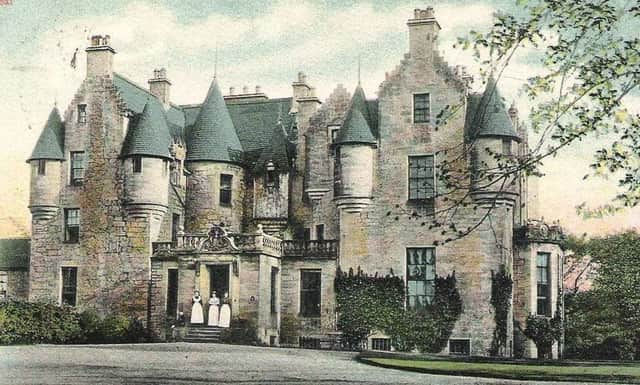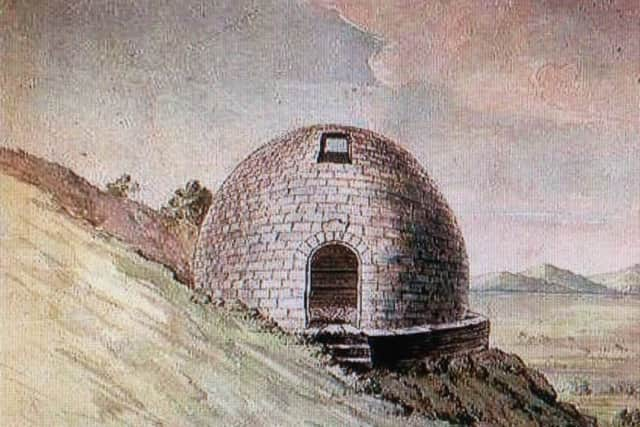Sir Michael's dam brings sad end to Arthur's O'on


It was the single greatest act of vandalism in Scottish history robbing us of what would surely have been the nation’s most important Roman structure, unique in Britain and very unusual anywhere else. It was of course the celebrated Arthur’s O’on (short for oven) which stood opposite the later Carron Ironworks on what is now Adam Crescent. Although it carried the name of the near-mythical dark age King Arthur scholars tell us that it was a Roman temple dedicated to Mars, the God of War, and dated to the second century AD.
Whether the O’on was constructed to mark some military victory or to signify the completion of the Antonine wall is unknown - John Reid has argued from careful examination of the geometry of the wall and the wall forts that the O’on was part of the complex surveying process used by the Roman engineers.
Advertisement
Hide AdAdvertisement
Hide AdIt was certainly prominent with its igloo (or beehive) shape standing 20 foot high, 25 foot diameter and walls 4 foot thick.


The really annoying thing about the demolition was that the Laird knew very well that it was a Roman monument.
For a century or more antiquarians had visited Stenhouse to examine, measure and draw the structure but this mattered not one whit to the penniless Sir Michael with a big family and a big mansion to maintain.
When it came down the scholars went on the warpath with one of them wishing that he would end up in hell carrying two big stones from the O’on round his neck with “Sir Michael Bruce –Vandal” written on his back in burning phosphorus!
Advertisement
Hide AdAdvertisement
Hide AdSir John Clark of Penicuik, one of the offended, constructed a replica on top of the stable block at his big house and it remains there today as a reminder of what we have lost.
So what was the Arthur connection?
The Dark Ages are well named and all kinds of odd theories appear on a regular basis and they are difficult to prove or disprove because the evidence (if there is any) is so patchy and unreliable. We have lots of imaginary Arthurian connections in the area (think Camelot and Camelon) but my favourite was the one produced by the late Archie McKerracher who argued that Arthur’s O’on was actually the famous Round Table where the King conferred with his famous knights sitting on the stone ledge seat which was certainly within the building.
I can’t remember what evidence he produced but he certainly had a vivid imagination!
Another more plausible story suggests that after the Battle of Falkirk in 1298 King Edward I of England, ever anxious to reinforce his claim to be the overlord of Scotland, stopped his soldiers demolishing the O’on because of its association with his hero King Arthur, and that on another visit to Falkirk in 1302 he revived the chivalric order of Round Table Knights.
Advertisement
Hide AdAdvertisement
Hide AdA year or so after the demolition, the gods of archaeology sent a river spate which swept away the new dam and the location of the lost stones has been a matter of debate for decades.
Are they at the bottom of the river?
Possibly, but some folk argue that since the Carron has changed its course since 1743 the stones might lie within the iron works. Whatever the truth we lost our greatest Roman monument for no good reason.
Very sad!